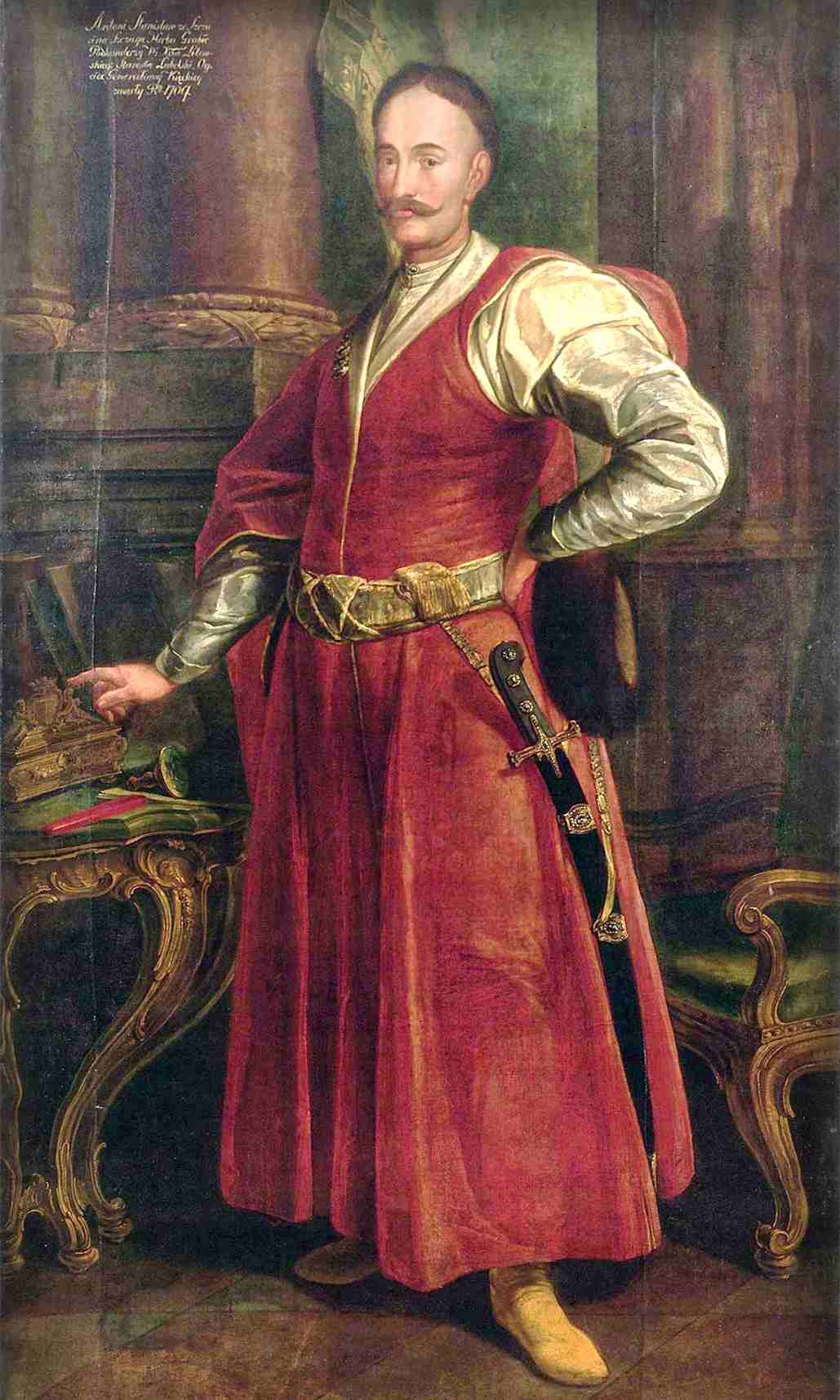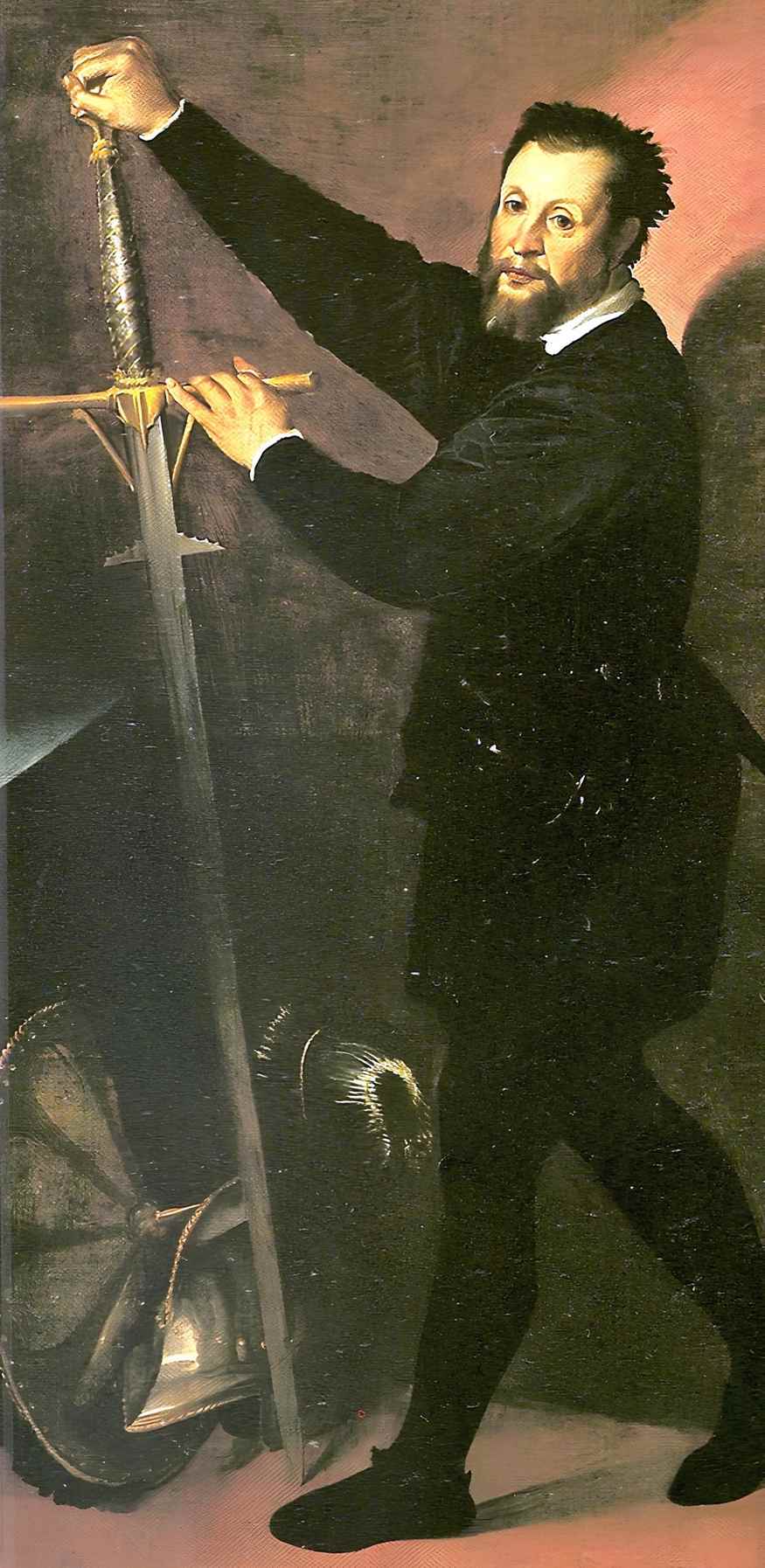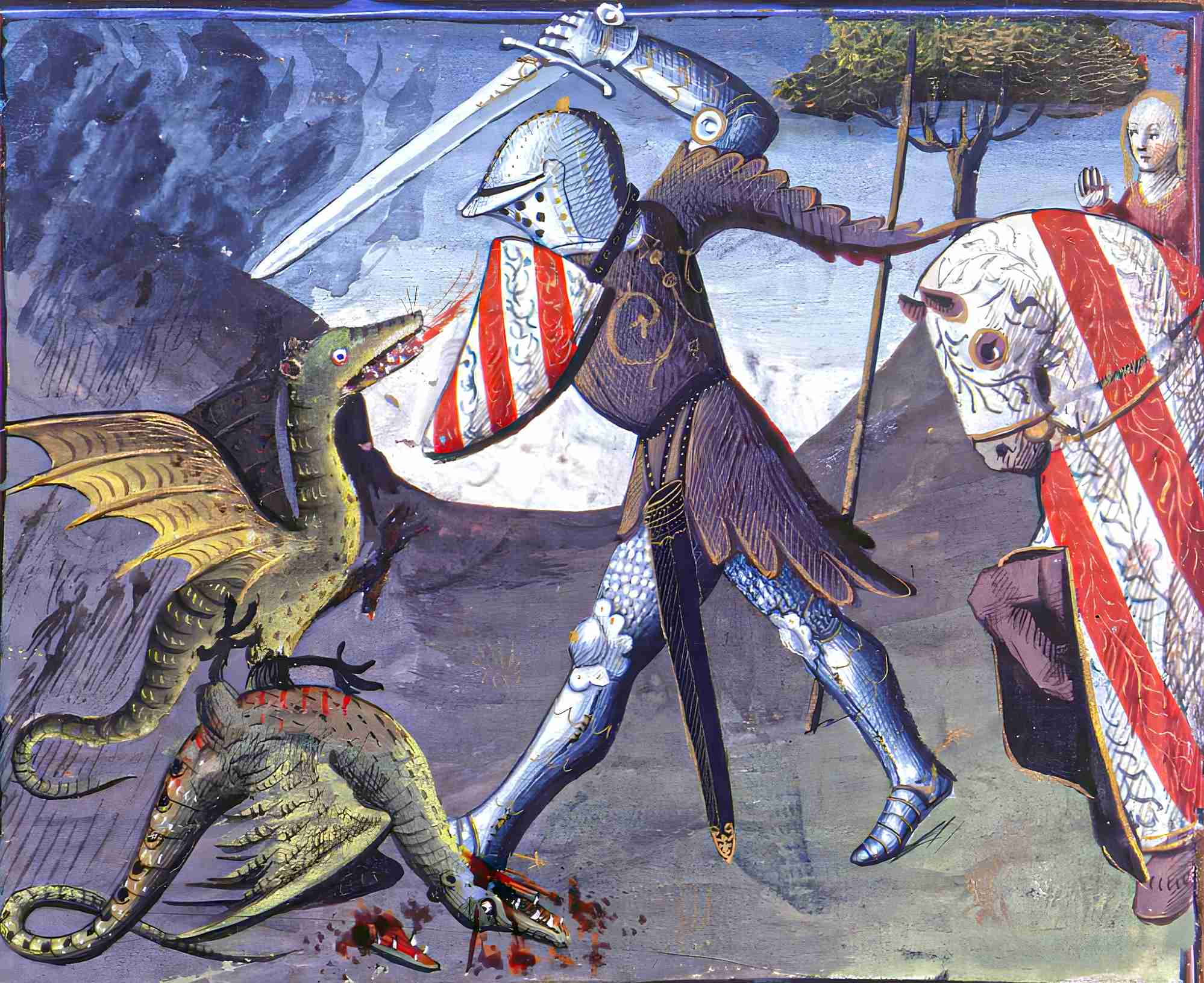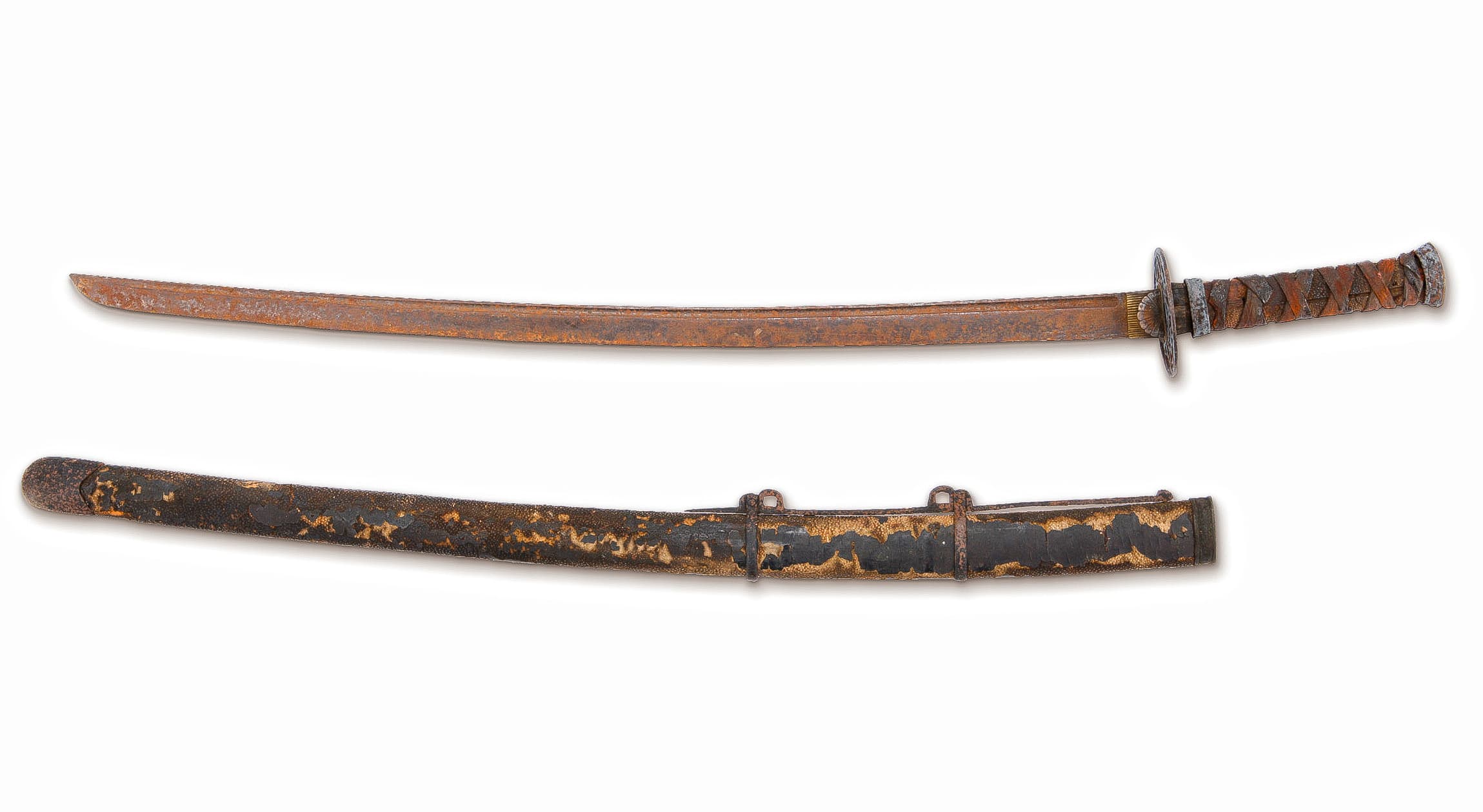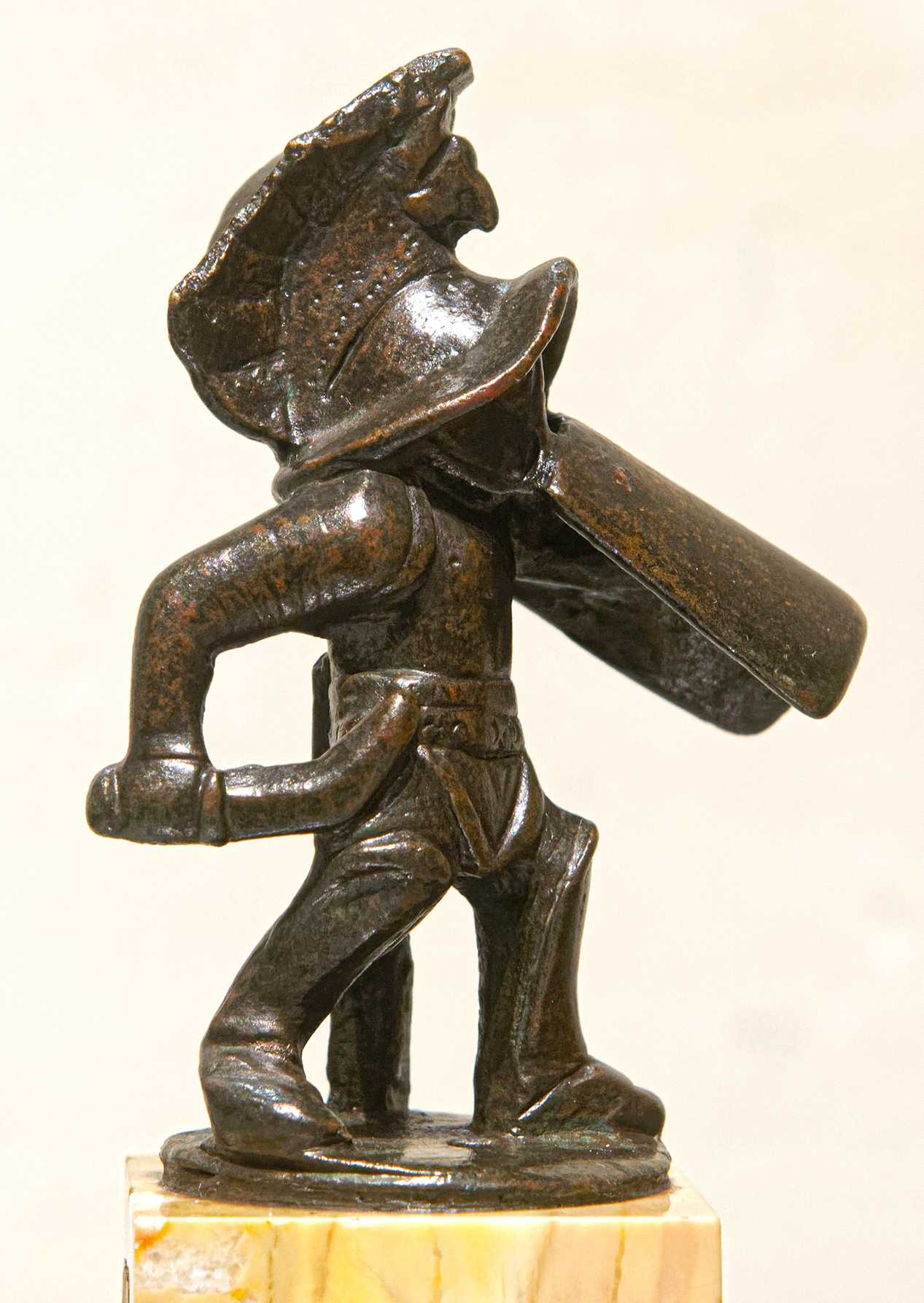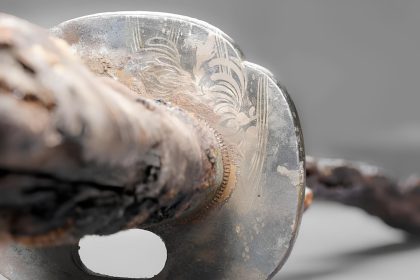The Koncerz Sword at a Glance
What is the origin of the Koncerz sword?
The weapon first emerged in the 15th century and was used in Turkey, Hungary, and the borderlands between France and Germany. There were three distinct varieties of the sword: Turkish, Hungarian, and Western European.
How was the Koncerz sword used in battle?
Hussars and cavalry units used the weapon primarily. It was strapped beneath the saddle of a horse, ready to be employed when the rider’s lance was broken or in situations where there was limited space for a charge. It was designed to counter soldiers equipped with polearms and could effectively pierce various types of armor worn by opponents.
What were the characteristics of the Koncerz sword?
The weapon had a long blade, typically ranging from 60 to 70 inches (1.5 to 1.8 m) in length, with a triangular or quadrilateral cross-section. It featured a half-open hilt, a spherical pommel, and a thin blade without cutting edges, making it less effective for slashing attacks.
Were there any limitations or drawbacks to the Koncerz sword?
Due to its relatively narrow cross-section and lengthy blade, the sword was prone to fracture compared to other combat swords. Its effectiveness relied heavily on the skill and swordsmanship of the wielder, as it required precise techniques and thrusting movements to be effective in battle.
The cavalry of the 15th through the 18th centuries often utilized a sword variant called the koncerz, a one-handed cold weapon. The long, thin blade is a defining feature of the koncerz, and it is one of the most unique historical swords. Despite its obviously Eastern provenance, some linguists trace the word “koncerz” back to the Latin contus, meaning a pole or thin projectile. However, a stronger etymological tie exists with the Tatar “khanjar” in medieval weaponry, which means “dagger”.
| Koncerz | |
|---|---|
| Type of weapon: | Sword |
| Other names: | Occasionally, estoc |
| Origin: | Eastern Europe, Turkic |
| Distribution: | Turkey, Hungary, Poland, Lithuania |
| Total length: | 50-63″ (1.5-1.6 m) |
| Weight: | 2.5–4.5 lb (1–2 kg) |
The koncerz became a distinctive weapon for the hussars during the 16th century. This sword featured a potentially four-sided blade, incorporating a central spine edge. It could have a narrow, square-shaped base or a diamond-shaped configuration, and later variations even introduced a three-sided design. The Turkic people may have taken the idea of this weapon from a similar Chinese weapon.
The Slavs adopted the koncerz from the Turkic peoples.
Koncerz’s Description

The koncerz resembled a longsword in many respects, and it is one of the lesser-known Renaissance swords. It had a long blade, which was often from 60 to 70 inches (1.5 to 1.8 m) in length, with a triangular or quadrilateral cross-section.
This section was less frequently lenticular, flat, or prismatic with concave sides. The standard koncerz was used with just one hand, but there was also a two-handed version known as estoc.

Only a few original examples of the weapon have survived, and sword enthusiasts and collectors are the owners of them. One of them is displayed in Poland, in the Czartoryski Museum in Krakow. This is perhaps due to the blade’s length and relatively narrow cross-section, making the weapon prone to fracture compared to other combat swords.
There are many instances of combined edged weapons among the European blades and swords, such as the Bec de Corbin or the Lucerne hammer. And some versions of koncerz were designed to allow cavalry to fire a pistol while charging with the sword on horseback. But the weight of such a combined arm raises questions about its usefulness.
The weapon’s handle went through many iterations. Originally, it featured an egg-shaped knob and an S- or 8-shaped grip. Later, a guard plate was mounted to the grip, and the crossbars were angled inward, closer to the blade.

The use of saber handles became widespread beginning in the late 16th century. These later models abandoned the medieval crossguard in favor of a saber-like guard.
Examples of Western spade handles appeared by the end of the 17th century. The first known portrayal of this weapon dates back to 1540 when it appeared on the coat of arms. Quickly adopted by the Turks, even Hassán Bey’s (1532–1532) elaborate koncerz hilt survived. It didn’t take long before it spread to Polish and Russian soil.
Origin of the Koncerz
The etymological Turkic origin of the name refers to an Eastern European origin for the sword. However, it is unclear where this weapon first arose.
The name “koncerz” appears earliest in history in the legends of the Battle of Kulikovo (1380). However, the Russian horse army never really adopted them. The name of this sword also appears in the Old Hungarian text “Besztercei szójegyzék,” which was compiled in 1395.
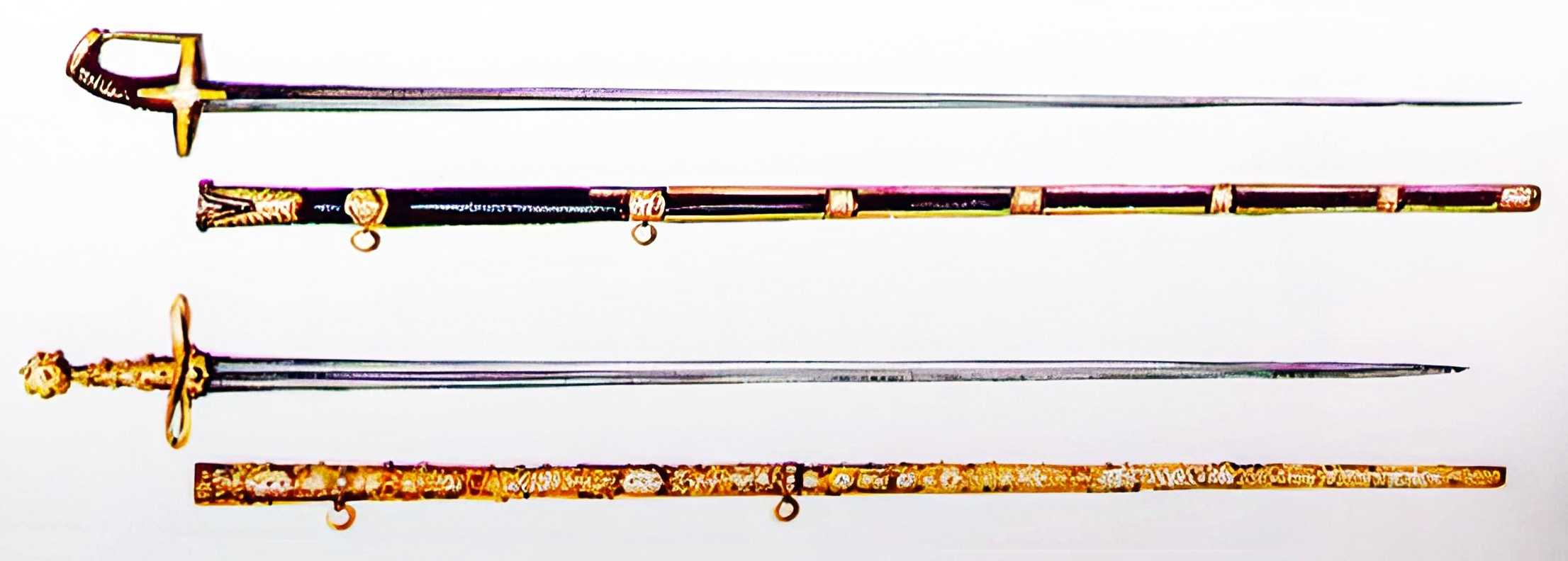
The koncerz sword originated among the Turkic peoples, who encountered European opponents with thick protective armor during battles. It was later adopted by medieval countries, including Kievan Rus’, and became particularly popular in the heavy cavalry of Poland. The koncerz was in use from the 12th century until the end of the 18th century.
The koncerz, like other Renaissance-era cavalry swords made in the Balkans, was very definitely adapted from an Ottoman Turk weapon.
The earliest examples in Polish arsenals date back to the 14th century, and they likely entered Europe through the Kingdom of Hungary. However, they were still unfinished items. The weapon didn’t reach its full form until the 16th century, making it a significant asset to the winged hussars of the Polish-Lithuanian Commonwealth.
Since the only way to wound a soldier in metal armor was to stab through the gaps in the armor, swords were modified from slashing weapons to stabbing weapons. The koncerz was derived from swords with such narrow blades.
The faceted blade was superior to the flat one because it could be made longer without increasing its weight.
The 15th century saw the appearance of koncerz in Turkey, Hungary, and the borderlands between France and Germany. Turkish, Hungarian—the most common kind was Polish—and Western European were the three distinct varieties of koncerz.
It wasn’t until the 14th and 16th centuries, with the advent of metallurgy and knightly armor, that a chopping sword was made nearly useless on the battlefield. To break through the armor, three to five chopping hits were required, which was only possible in a one-on-one battle.
The situation got so dire that weaponsmiths began seeking alternatives. This may be observed in the creation of “armor-piercing” swords such as the estoc and the Polish-Lithuanian koncerz sword.
In the 17th century, “granatami” referred to a kind of Polish koncerz with a smaller sword hilt and triangular blade.
Because of the high demand, Hungarian swordsmiths had to outsource koncerz production, leading to a proliferation of South German factories producing this sword, some of which had Italian and Spanish blades.
The Hungarian cavalry also utilized the sword during the War of Independence (1703–-1711) led by Francis II Rákóczi. Eight koncerz were discovered in a 1708 inventory.
Koncerz’s History

The first koncerz were used in the 14th and 15th centuries and were very similar to traditional swords. Their length was about 50 inches (1.3 m), with a straight crossguard and a sword hilt.
However, in the 16th and 17th centuries, they became lighter and practically adapted only to stabbing. This version of the weapon was up to 63 inches (1.6 m) long—almost as long as some spadone—with a half-open hilt (a hilt that partially covers the hand) and a spherical pommel.
Only employed on horseback, this weapon was designed to counter soldiers equipped with polearms, such as the lance or the ahlspiess. The soldiers did not carry it around their waists but attached it to the right or left side of the saddle, on the rider’s knee. Often, it was used as a “spare spear”. Most often, the spear was used for the first attack, followed by the koncerz.
According to French geographer Guillaume de Beauplan, when the fighting became tough, the hussars would wield koncerz of at least 5 feet in length to finish off the fallen foes.

And the rider would employ this sword in situations where the rider’s lance was broken or when there was limited space to gather enough momentum for a charge.
In Poland and Hungary, light cavalry units and hussars used koncerz, which were similar to hussar sabers but had closed hilts (a hilt that fully covers the hand).
Thus, it was technically among the knight’s weapons.
The koncerz of Hungary and Western Europe were designed for use only in battle, whereas the weapons of Turkish origin were used primarily for ceremonial reasons—with their elaborate ornamentation, sword accessories, and blade craftsmanship.
Light mercenary cavalry in the Polish imperial army often used koncerz in addition to sabers. These mercenaries included the Hungarian (hussars) and Polish (lisowczyks, “lost men”) cavalry units.
In conflicts against the Turks, the koncerz proved effective at penetrating their chain mail. The larger blade of this weapon made it useful for combat against a saber as well.
Stibor of Stiboricz (a Polish aristocrat in the Kingdom of Hungary), who was buried in 1414, is shown on his gravestone with a koncerz strapped to his right side.
Polish winged hussars carried the koncerz alongside the saber and used it in the event of a broken spear.
According to a 1721 Hungarian coat of arms, the koncerz was not gripped in a fist, but rather the handle was supported in the palm by the index and middle fingers.
Hungarian hussars serving in France were said to “bend over the horse’s head when stabbing and use the sword to stab the enemy by leaning the sword against their knee” in Histoire de la Milice Françoise (1721).
The kanchar appears in the historical records of the Grand Duchy of Lithuania in the second half of the 16th century. They went out of use in the 18th century.
The Holy Roman Empire’s regular hussars used koncerz, which was forged of the finest steel and cost nearly six times as much as the saber stipulated by the Charter. In Europe, the weapon gained a reputation as a noble sword.
The Functionality of the Weapon

When driven with its pointed end, the koncerz could pierce the Turkish chain mail, behteret (an Eastern armor), and baidana (a chain mail with flat iron rings), as well as the thick, quilted cotton kaftans worn by Tatar horsemen during the battles in Eastern Europe.
The two-handed estoc, created to pierce through armor with great power, has grown popular in Western Europe. The German name of this weapon, Panzerstecher (i.e., “armor piercer”), provides secondary evidence (in Vladimir Brnardic’s The Imperial Armies of the Thirty Years’ War 1618–1648 (2): Cavalry) for the mentioned use of koncerz above.
However, it was not an effective weapon for slashing since the blade was very thin and had no cutting edges. Therefore, it required great swordsmanship and the utilization of certain swordfighting techniques to use this weapon in battle.
And the claims by the Polish historian of literature Henryk Markiewicz that the weapon could be used effectively as a heavy cavalry cutting weapon in combat can be disregarded as pure fiction.
These quotes below exemplify instances where the koncerz sword was portrayed as ineffective against certain types of chain armor, as described in various books:
- “…he felt that the koncerz slipped in cutting through Babinicz’s misiurka [a chain-plate helmet].”
(The Deluge, vol. 3, chapter XXI).- “He struck me in the head with a koncerz and brought me down. [He is surviving]”
(The Deluge, vol. 2, chapter XL).- “…Skrzetuski attacked the enraged Tugay Bey and smashed his head with a koncerz (…), perhaps the Damascus-forged misiurka could withstand the blow, but the blade curled on impact and shattered into small pieces.”
(With Fire and Sword, vol. 2, chapter XXIV).- “…a gigantic hussar… stands in the stirrups to strike more forcefully, and with a terrifying swing, he brings down the koncerz blade upon the aged head (…) and Kiaja, almost cut in half to his shoulders, falls…” (Colonel Wolodyjowski, Epilogue).
References
- Imperial Armies of the Thirty Years’ War (2): Cavalry by Vladimir Brnardić, page 49 – (Goodreads)
- Hans Talhoffer’s (1420–1490) Fencing Book (Fechtbuch) (German) – (MetMuseum)
- Grzegorz Zabinski, Bartlomiej Walczak – Codex Wallerstein: A Medieval Fighting Book from the Fifteenth Century on the Longsword, Falchion, Dagger, and Wrestling, 2002.




